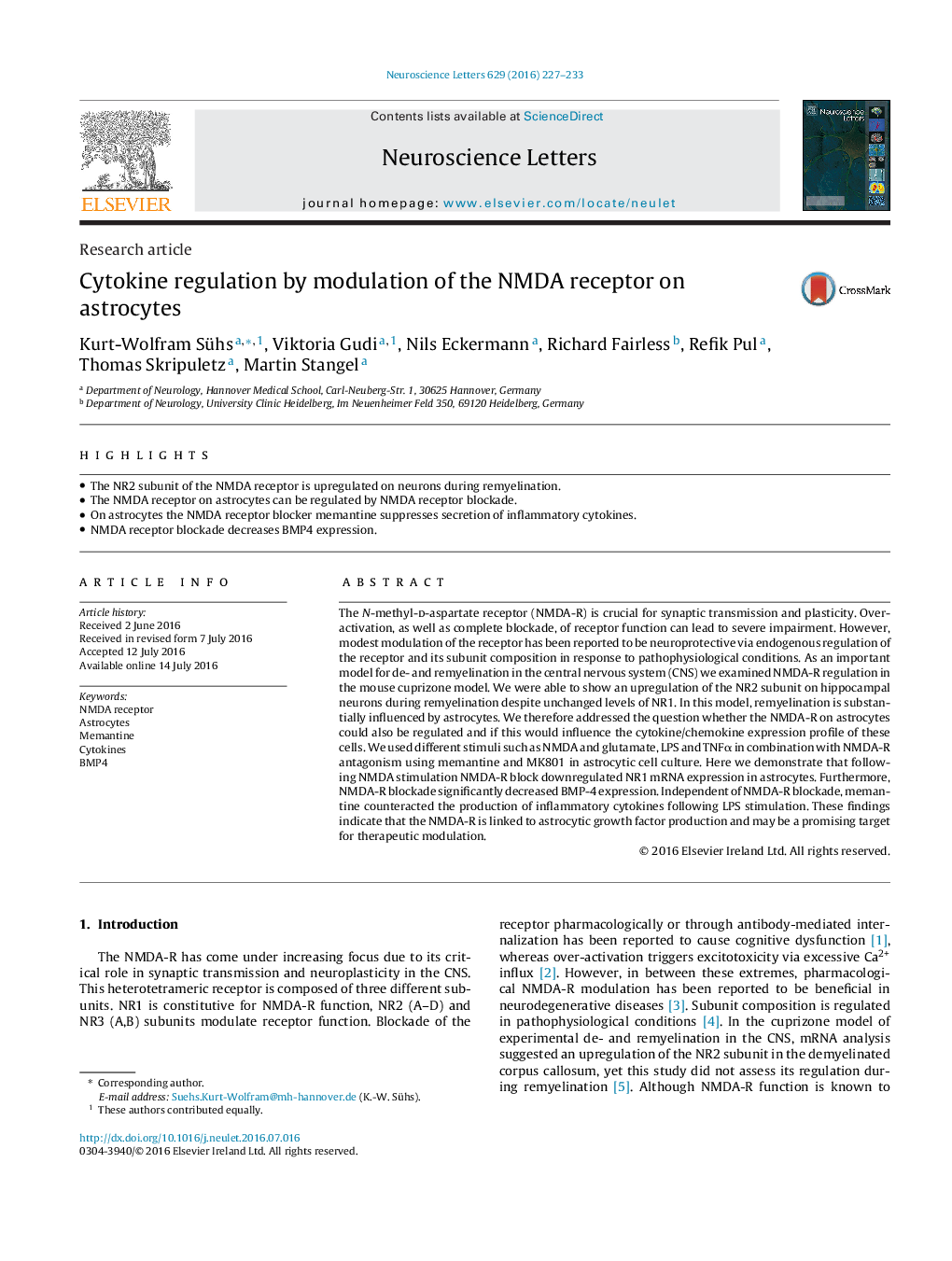| Article ID | Journal | Published Year | Pages | File Type |
|---|---|---|---|---|
| 4343241 | Neuroscience Letters | 2016 | 7 Pages |
•The NR2 subunit of the NMDA receptor is upregulated on neurons during remyelination.•The NMDA receptor on astrocytes can be regulated by NMDA receptor blockade.•On astrocytes the NMDA receptor blocker memantine suppresses secretion of inflammatory cytokines.•NMDA receptor blockade decreases BMP4 expression.
The N-methyl-d-aspartate receptor (NMDA-R) is crucial for synaptic transmission and plasticity. Over-activation, as well as complete blockade, of receptor function can lead to severe impairment. However, modest modulation of the receptor has been reported to be neuroprotective via endogenous regulation of the receptor and its subunit composition in response to pathophysiological conditions. As an important model for de- and remyelination in the central nervous system (CNS) we examined NMDA-R regulation in the mouse cuprizone model. We were able to show an upregulation of the NR2 subunit on hippocampal neurons during remyelination despite unchanged levels of NR1. In this model, remyelination is substantially influenced by astrocytes. We therefore addressed the question whether the NMDA-R on astrocytes could also be regulated and if this would influence the cytokine/chemokine expression profile of these cells. We used different stimuli such as NMDA and glutamate, LPS and TNFα in combination with NMDA-R antagonism using memantine and MK801 in astrocytic cell culture. Here we demonstrate that following NMDA stimulation NMDA-R block downregulated NR1 mRNA expression in astrocytes. Furthermore, NMDA-R blockade significantly decreased BMP-4 expression. Independent of NMDA-R blockade, memantine counteracted the production of inflammatory cytokines following LPS stimulation. These findings indicate that the NMDA-R is linked to astrocytic growth factor production and may be a promising target for therapeutic modulation.
